Star Sum
Problem
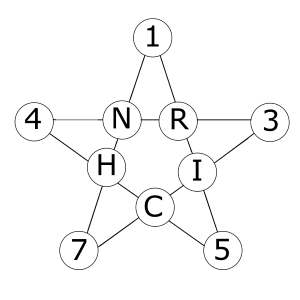
In the star shown here the sum of the four numbers in any "line" is the same for each of the five "lines".
The five missing numbers are 9, 10, 11, 12, 13.
Which number is represented by R?
If you liked this problem, here is an NRICH task which challenges you to use similar mathematical ideas.
Student Solutions
Answer: 13
Using algebra to compare the letters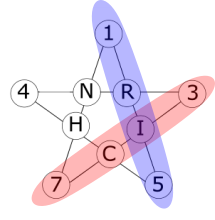
I + R + 6 = I + C + 10
$\therefore$ R + 6 = C + 10
$\therefore$ R is 4 more than C
But that is only possible if R = 13 (and C = 9)
Using reasoning
1 + 3 + 5 + 7 + 9 + 10 + 11 + 12 + 13 = 75
Each number is on 2 lines so the lines add up to 75$\times$2 = 150
Five lines $\therefore$ 30 per line.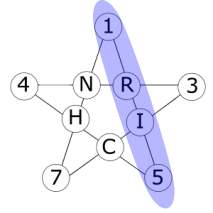
1 + R + I + 5 = 30 $\Rightarrow$ R + I = 24
R and I are 11 and 13
If R = 11: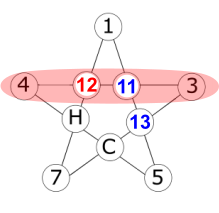
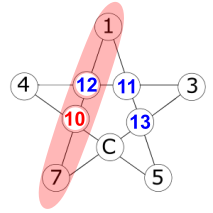
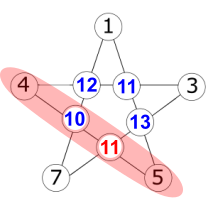
If R = 13: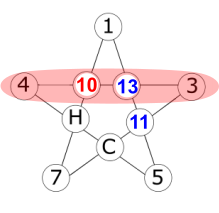

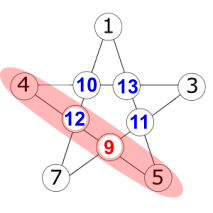
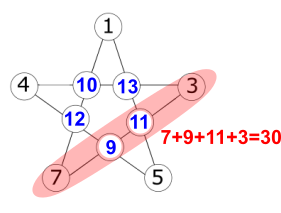
Alternatively, using algebra and equating the sum of each line
We are told that the sum of each line is equal. Therefore $1+R+I+5, 4+N+R+3, 7+H+N+1, 5+C+H+4$ and $3+I+C+7$ are all equal.
Combining the equations with a common term in turn gives:
$1+R+I+5=4+N+R+3⇒6+I=7+N⇒I=N+1$
$4+N+R+3=7+H+N+1⇒7+R=8+H⇒R=H+1$
$7+H+N+1=5+C+H+4⇒8+N=9+C⇒N=C+1$
$5+C+H+4=3+I+C+7⇒9+H=10+I⇒H=I+1$
$1+R+I+5=3+I+C+7⇒6+R=10+C⇒R=C+4$
The last of these equations is a good check to make sure that the results of the others work.
This means that, in increasing order, adding one each time, the numbers are $C$, $N$, $I$, $H$, $R$.
Therefore, $R$ is the largest number, so $R=13$ (and $H=12, I=11, N=10$ and $C=9$, which is $4$ less that $R$ so is correct).
